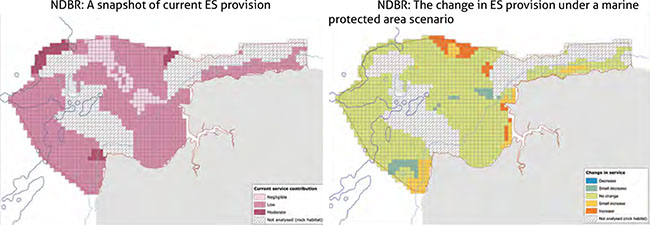2.4.2.6 Lesson Learned 6: Management requires approaches which are dynamic and demonstrate connectivity

Why
Most Ecosystem Services Assessments are static and provide a snapshot of a specific area, but management challenges require consideration of interconnected dynamic processes.
Ecosystem Services Assessment methods are generally most effective when dealing with changes in values resulting from a variety of possible scenarios, and for understanding the tradeoffs between different ecosystem services under such scenarios.
How
In most case studies in the VALMER project stakeholder led scenario approaches (Plymouth Sound to Fowey ![]() , North Devon Biosphere Reserve
, North Devon Biosphere Reserve ![]() , Golfe Normand-Breton
, Golfe Normand-Breton ![]() ) were used to demonstrate qualitatively how ecosystem services provision changes under different futures.
) were used to demonstrate qualitatively how ecosystem services provision changes under different futures.

However, for most cases the resources did not allow for quantitative and connective scenario results as this was too time consuming and expensive to undertake.
A complete system dynamic model of kelp ecosystem services provision was carried out (Parc Naturel Marin d'Iroise ![]() ) but was only made possible by the large amount of available data concerning this ecosystem and its uses.
) but was only made possible by the large amount of available data concerning this ecosystem and its uses.
What next
- further development of models to show changes in ecosystem services provision according to pressures or management scenarios, with improved spatial and temporal resolution and scale;
- more empirical research on linkages between pressures and ecological processes, and in turn between ecological processes and human activities.

